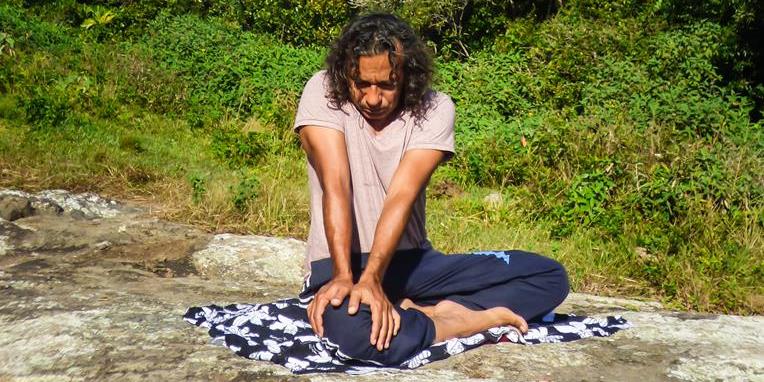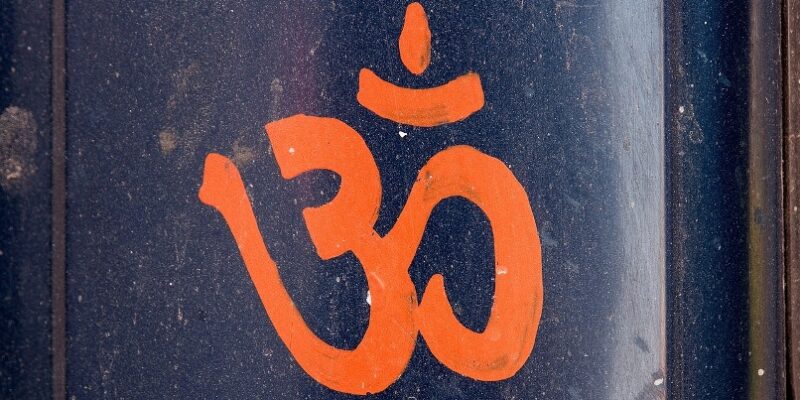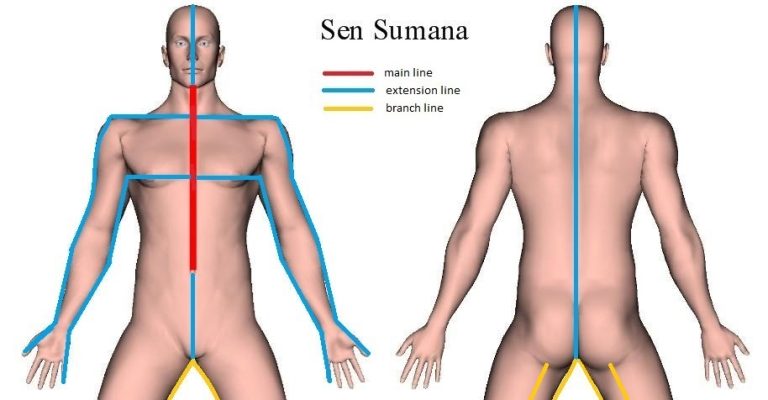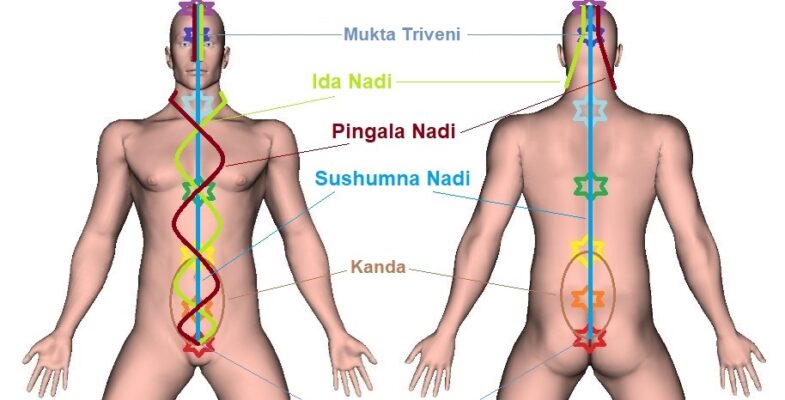
In Yoga, Sushumna Nadi — also written as Susumna Nadi — is known as the main, most important Prana Energy Channel, part of the set of fourteen major Nadis.
This Prana Life Force pathway (or energy meridian) is sometimes also called after its most inner Nadi channel — the Brahma Nadi or Brahmani Nadi — referring to the ultimate, Divine Being, and to the attainment of Spiritual Enlightenment. Mind that Sushumna Nadi is said to actually consist of three inner Nadis which envelop i.e. enclose each other.

Other names given to Sushumna Nadi are Saraswati — not to be confused with the actual Saraswati Nadi (one of the 14 primary Nadis) — Jnana (Wisdom i.e. Knowledge), and Agni (because of its association with the Agni Digestive Fire Element). In Thai Traditional Medicine, Sushumna Nadi finds its equivalent in Sen Sumana.
Sushumna Nadi represents the balance between opposite but complementary sets of energies — solar and lunar, male and female, active and passive. As such, it’s also the neutral, balancing Prana Channel between Ida Nadi and Pingala Nadi, the latter two Nadis being located on each side (left and right respectively) of Sushumna Nadi. It’s thought that this equilibrium facilitates the awakening of higher consciousness i.e. spiritual awakening.
In fact, the decisive goal of many traditional Yoga practices was to direct Prana Life Force into the Sushumna Nadi to enable Kundalini Energy to rise to the top of the head — to the Crown Chakra i.e. Sahasrara Chakra — in order to ultimately bringing about Moksha or Spiritual Liberation.
Generally, Sushumna Nadi remains relatively dormant when the other Nadis flow strongly, and is only activated when the Prana flow through other Nadis is restrained or slower. Activation of Sushumna Nadi happens automatically when we sleep, or alternatively through Yogic exercises such as carrying out Pranayama, Asanas, Mudras and Bandhas, among other Yogic practices.
Trajectory of Sushumna Nadi

In ancient Yoga sources, one finds different pathways for Sushumna Nadi. The one shown in the image above is perhaps the most prevalent one. In any case, below are some of the textual descriptions of its trajectory we’ve found in classical scriptures:
- The Nadi located in the middle of the knot of the navel is Susumna (Darshana Upanishad)
- Susumna is attached to the vertebral column known as Vina-Danda that is made up of bones and extends up to the skull (Darshana Upanishad);
- Ida is on the left side and Pingala on the right side, while the Susumna is in the middle. These three are known to be the paths of Prana (Dhyana Bindu Upanishad);
- From the Muladhara Chakra up to the head is the Susumna resembling the shining thread of the lotus (Dhyana Bindu Upanishad);
- Susumna conducts through the mid-region. She conducts up to the Brahmarandhra through the backbone (Siddha Siddhanta Paddhati);
- In the middle of body there exists the Sushumna Nadi which is as bright as the sun and as cool as the moon. It starts from Mooladhara and goes up to Brahmarandra which is in the top middle of the skull. It is well known that in the middle of it there exists Kundalini which is as bright as crores of suns and as thin as the lotus thread (Advaya Taraka Upanishad);
- Susumna is said to be the sustainer of the universe and the path of salvation. Situated at the back of the anus, it is attached to the spinal column and extends to the Brahmarandhra of the head and is invisible and subtle and is Vaishnavi (Shandilya Upanishad);
- Sushumna Nadi is radiating like the sun from Muladhara to Brahmarandhra (Mandala Brahmana Upanishad);
- Susumna stands in the middle (Yoga Chudamani Upanishad);
- Among them, Susumna is firmly established. It is placed inside in the middle of the umbilical knot and extends straight up to Brahmarandhra (Tri Sikhi Brahmana Upanishad);
- There are two nerve currents, Ida and Pingala, along the spinal column and a hollow canal, Susumna, in the middle (Hamsa Upanishad);
- The middle path (called Sushumna) goes into the spinal cord (Shiva Samhita);
- The Nadi which is between Ida and Pingala is certainly Sushumna (Shiva Samhita);
- Sushumna is in the central place (Goraksha Samhita);
- Sushumna is in the middle of the Kandasthana and extends up to the top of the head (Yoga Yajnavalkya);
- The Nadi Sushumna, whose substance is the threefold Gunas, is in the middle. Her body, a string of blooming Dhatura flowers, extends from the middle of the Kanda to the Head, and the Vajra inside Her extends, shining, from the Medhra to the Head (Sat Chakra Nirupana);
- Susumna is properly situated in the center of the Kanda and by being along the backbone it abides in the head (Vasistha Samhita );
- In time by the action of Vayu a straight long Nadi called Sushumna is produced. The mouth of the Nadi is downwards. There is a Nadi on each side of it. That on the left is Ida and that on the right is Pingala (Prapanchasara Tantra);
- Ida is situated on the left, Pingala on the right and Susumna in the middle (Shiva Swarodaya);
- Hail to the center of the forehead, Susumna, the Sakti destroying Duality (Bhavana Upanishad);
- Susumna is the chief Nadi, holding onto it all other Nadis, like the fibers of a Lotus facing downwards, through the spinal column (Hatha Tattva Kaumudi).
As already mentioned at the start of this post, note that according to several ancient Yogic sources, Sushumna Nadi is not just one Nadi but made up of three other Yoga Nadis (located into i.e. around each other). These three Nadis, which are considered the most subtle of all Nadis, are Vajra Nadi (Vajrini Nadi), Chittra Nadi (Chitrini Nadi), which lies inside Vajra Nadi, and Brahma Nadi, which lies inside Chittra Nadi and connects with the crown of the head i.e. with the Crown Chakra.
Indications and Function of Sushumna Nadi
The main functions of Sushumna Nadi are associated with the Wind Element, Agni Digestive Fire Element, Sattva Energy (harmonious energy), and Spiritual Enlightenment. Moreover, it’s the central Nadi through which Prana is distributed to all the other Nadis.

Additionally, when Prana Life Force travels up the Sushumna Nadi, it opens, activates, and energizes all the Chakras it finds on its way.
It’s also thought that when Prana Energy flows for a prolonged period through this pathway, which is typically brought about through Yogic exercises, it facilitates us to enter into the Samadhi state.
A clear, pure, and activated Sushumna Nadi brings joy, peacefulness, ecstasy, happiness, bliss, clarity, spiritual insight, and equilibrium of body and mind.
On the physical level, Sushumna Nadi is associated with brain, respiratory, abdominal, and digestive functions. Typically, the internal organs that are connected through Sushumna Nadi are the brain, heart, lungs, intestines, and stomach.

















